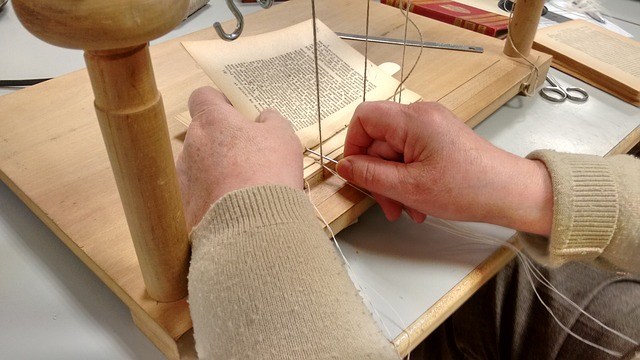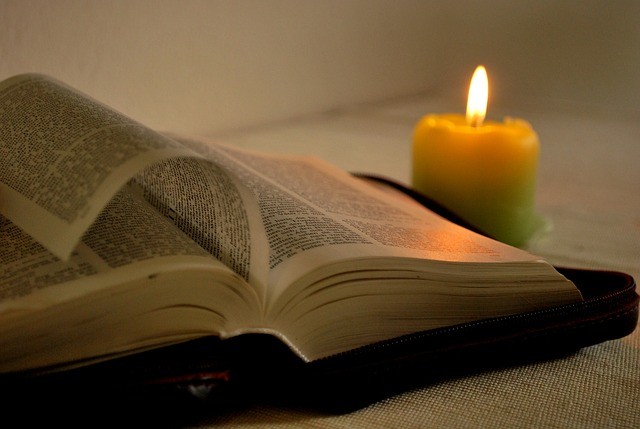The quality of a book often depends on the type of binding used. Lesser quality binding techniques can often result in cutoff words, pages falling out, and a cheap look.
That’s why many choose the Smyth Sewn binding technique. It’s the highest quality book binding available on the market today and for good reason.

Not only are Smyth Sewn books durable, but also easy on the eyes.
So what exactly is this popular binding technique?
Why is Smyth Sewn Binding So Special?
Smyth Sewn binding is a technique that involves sewing the pages into the book physically with binding thread.
Once sewn in, fabric backing and various adhesives reinforce the pages, ensuring a lasting hold.
This technique is popular with books of all types because they lay completely flat and can endure years of wear and tear.
Some books that often use Smyth Sewn binding include:
- Textbooks
- Library books
- Notebooks and journals
- Log books
- Encyclopedias
- Children’s books
Books with this type of binding are also tamper-proof, since you cannot remove a single piece of the book without damaging the integrity of the entire thing.
This makes it especially popular for use on top-secret projects or notebooks used to log private business matters.
Unlike the technique called ‘perfect binding,’ Smyth Sewn binding ensures that a book lasts for many years and that pages aren’t able to fall out.

How is Smyth Sewn Binding Done?
Before using the Smyth Sewn method, you’ll need to make ‘signatures’ by printing on large sheets of paper and folding them into groups.
An ideal group of pages includes between 16 and 24 pages.
Once done sewing a group, make sure to tie the thread. When you’re finished with each group, you’ll attach them with more thread and use glue and adhesives to seal them to the spine tightly.
If you open the book to a random page and are able to see some of the stitches, don’t worry. This is entirely normal in books using this binding technique.
If you wish to hide the stitches, you can use decorative head bands and foot bands made of ribbon. This adds a beautiful touch to any type of book.
If you want to try this technique at home but don’t have the tools, there are many different Smyth Sewn binding machines on the market to consider.
Here’s a video showing an example of smyth sewing.
How Does it Compare With Other Binding Techniques?
There are literally hundreds of different binding techniques used, but only a few that are comparable to the quality found in Smyth Sewn Books.
The binding you choose depends on a lot, including your budget, the type of book, and the audience you’re hoping to attract.
- Perfect Binding – As mentioned above, perfect binding is another extremely common technique next to Smyth Sewn binding. The one big difference is you use glue rather than thread. Also known as adhesive binding, this technique is common with paperback books. Although also used in hardback books, the pages are much more likely to fall out this way.
- Saddle Stitched Book Binding – With this binding technique, you’ll use a wire stitch or book staple to hold four pages at a time together. The staples or a few stitches then hold the pages to the spine, going all the way through. Although this form of binding is cheap and easy to do, it’s only effective for smaller books like magazines or pamphlets. Attempting to use it in anything larger will result in a messy look and inability to hold the pages in firmly.
- Side-Stitch Binding – This is another type of binding often used for magazines. With this technique, you force a wire through the side of each signature from the front to the back. This binding technique is used some due to its ease and affordability, but not often because it does not allow you to open the book fully.
- Case Binding – If you are binding a hard cover book, case binding is an ideal technique. With this type, you place the signatures in a book block and glue them to the spine. If you love those decorative open-book displays, then this is a beautiful method that allows you to achieve just that; however, it is much more expensive than the Smyth Sewn binding method. If your budget is on the lower side, this might not be the best option for you.

Depending on the type of book you’re choosing to make physical, you should definitely consider the Smyth Sewn binding technique first.
If you have the right binding machine, a little time, and the need to produce a beautiful book that not only opens flat, but also lasts through lots of wear and tear, this is the best option.
There’s many other binding techniques, including the ones mentioned above, but nothing is quite as durable as a Smyth Sewn bound book.
Have you tried the smyth sewn binding method?




